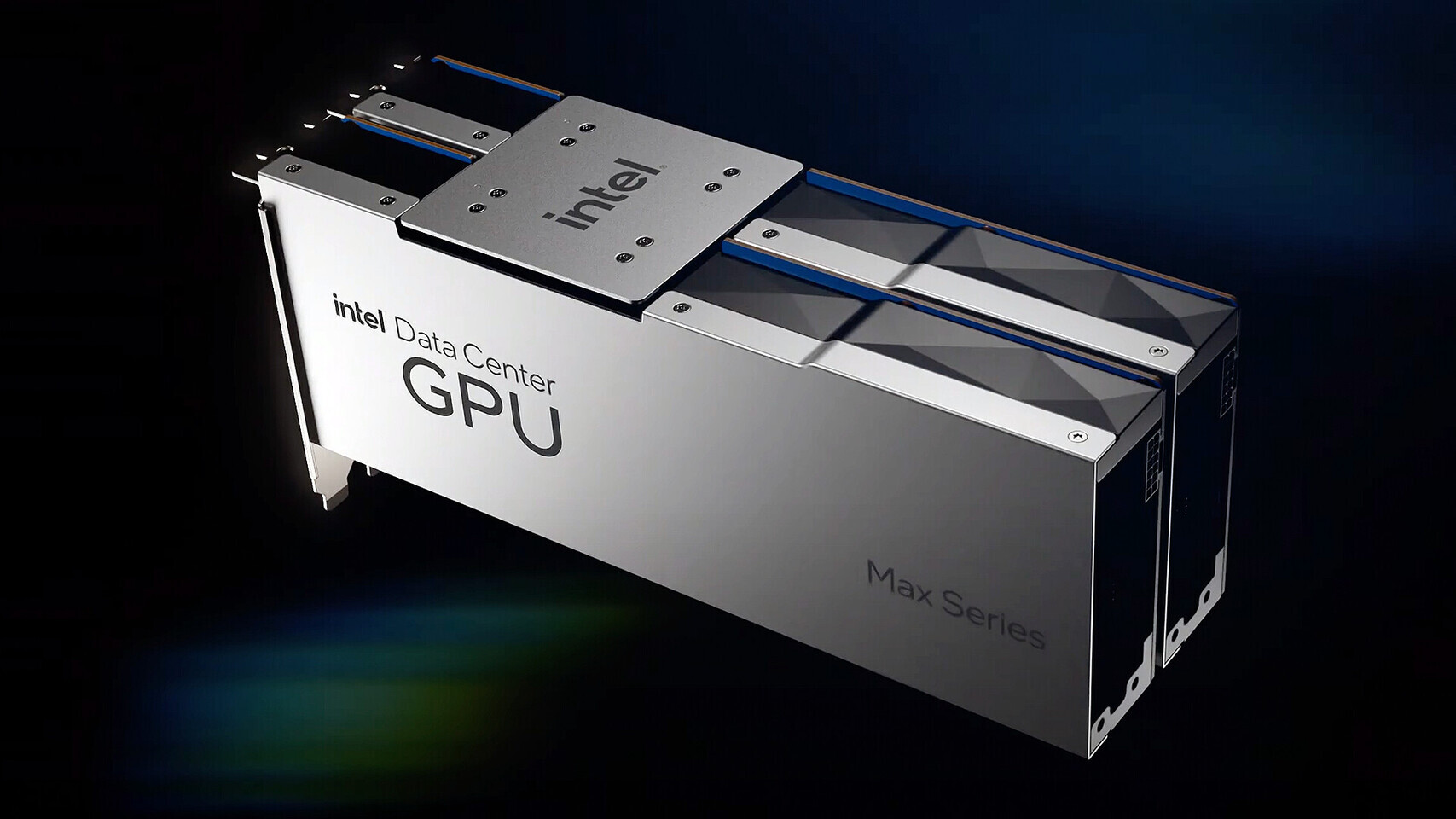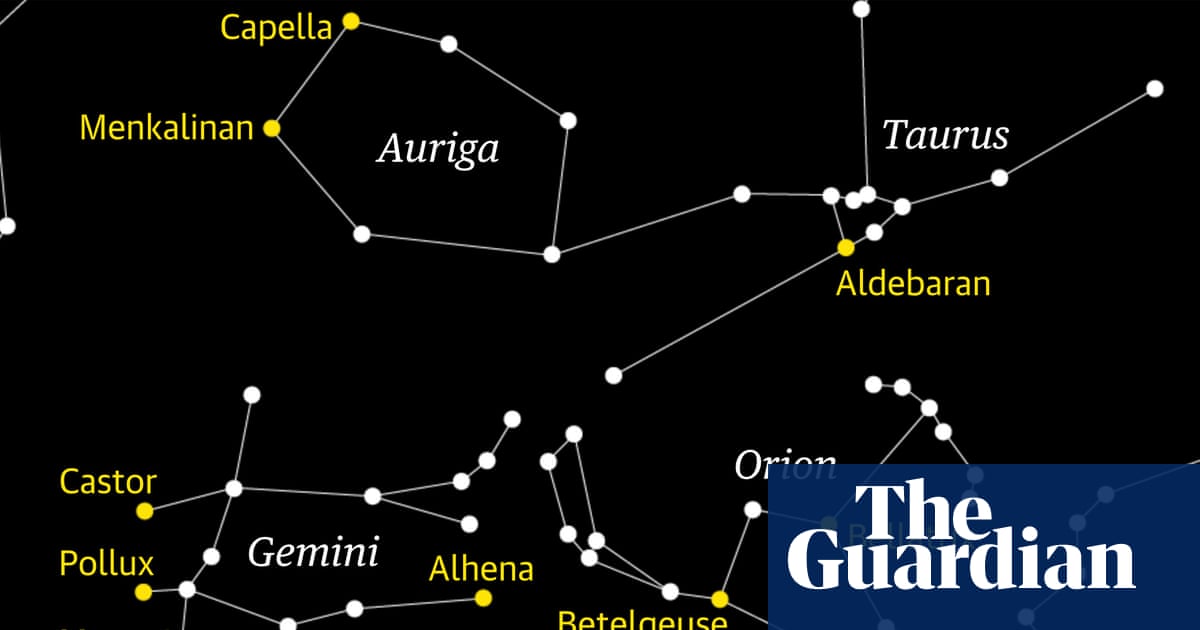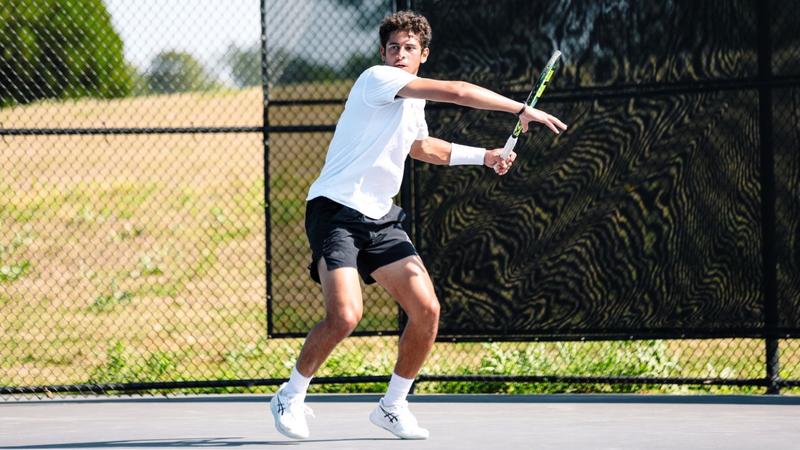Blog
-

Intel Phases Out “Ponte Vecchio” and “Arctic Sound” Data Center GPUs
Intel has apparently started a slow deprecation phase of its “Ponte Vecchio” Data Center GPU Max and “Arctic Sound” Data Center GPU Flex series. According to the changelog in the Intel XPU Manager—a free and open-source tool for monitoring and… -

Evaluation of the clinical efficacy of nucleotide MALDI-TOF-MS for the
Introduction
The World Health Organization (WHO) identifies tuberculosis (TB) as a persistent and significant global health issue, with over 10 million new cases and more than 1.25 million deaths annually.1 Despite advancements in diagnostic…
Continue Reading
-

Watch the New Video for Moonlighter 2: The Endless Vault and Learn About the Ongoing Playtest!
Moonlighter 2: The Endless Vault is being developed by Digital Sun and published by 11 bit studios, and it’s set to release to Early Access on Steam. Recently, the team released a video where they talk…
Continue Reading
-

Borg’s First Goal Propels Tritons to Draw in Hawai‘i

Study finds prolonged fasting common among infants before anesthesia
Most children – including nearly 80% of infants – go without clear liquids before surgery for at least twice as long as guidelines recommend, according to an analysis of data on more than 70,000 children presented at the…
Continue Reading

The Night Sky This Week
Northern lights (aurora borealis) illuminate the night sky over Vienna during a geomagnetic storm on May 11, 2024. (Photo by MAX SLOVENCIK/APA/AFP via Getty Images)
APA/AFP via Getty Images
Each Monday, I pick out North America’s celestial…
Continue Reading

Starwatch: worth staying up for pleasing view of moon encountering Jupiter and Gemini | Space
It is worth staying up for this pleasing view of the moon as it encounters Jupiter and the brightest stars of Gemini, the twins. The chart shows the view looking east from London at 00:30 BST in the very early morning of 14 October.
Gemini will…
Continue Reading

Acupuncture Modalities Differentially Modulate Pain and Joint Damage i
Introduction
Osteoarthritis (OA) is a primary cause of disability and chronic pain, impacting approximately 500 million people worldwide, with forecasts of almost one billion by 2050.1,2 OA considerably lowers the quality of life due to its characteristic progressive joint deterioration, pain, and loss of mobility. Though they provide short-term comfort, non-steroidal anti-inflammatory medicines (NSAIDs) and corticosteroids present significant gastrointestinal, cardiovascular, and renal hazards when used long-term.3,4 While effective for some, surgical interventions are invasive, costly, and not universally accessible.
These restrictions have fueled a rise in interest in integrative and alternative treatments. The monosodium iodoacetate (MIA) model has been a valuable instrument for reproducing important OA characteristics in preclinical research. Therefore, it is a promising avenue for assessing new, non-pharmacologic treatments.5,6 The GB34 acupoint, located near the fibular head, is often used for joint-related indications in both experimental and clinical settings. Evidence suggests that stimulation at GB34 can modulate inflammatory processes and promote cartilage preservation.7–9
Acupuncture has gained recognition for its affordability,10 safety,11,12 and effectiveness in managing musculoskeletal pain. The American College of Rheumatology conditionally recommends it for knee OA,13 with reviews supporting its pain-relieving and functional benefits.14–17 Acupuncture treatments such as Electroacupuncture (EA), bee venom acupuncture (BVA), and laser acupuncture (LA) differ in mechanism while sharing common targets. Although previous studies have noted the therapeutic benefits of LA, EA, and BVA in OA.18–23 This study is the first to directly compare these treatments under the same conditions. This direct comparison fills a critical gap in the literature, providing valuable insights for clinical decision-making in integrative pain management. The potential impact of these findings on the future of pain management is significant.
Methods
Ethics Statement
This study was approved by the Dongshin University Animal Committee (DSU-2024-07-04). All animal care and experiments were conducted under the Guide for the Care and Use of Laboratory Animals of the National Institutes of Health and Dongshin University Institutional Animal Care and Use Committee policies.
Animals and Osteoarthritis Induction
Forty-eight male Sprague-Dawley rats (8 weeks old, 240–280 g; SAMTAKO Korea) were housed under controlled conditions (22 ± 2°C, reversed 12-hour light/dark cycle) with ad libitum access to food and water.
Male rats were used to reduce differences in pain and inflammatory responses caused by sex hormones. This decision was based on previous research showing that pain from OA varies significantly with a rat’s age and sex.24
OA was induced via intra-articular injection of monosodium iodoacetate (MIA; Sigma-Aldrich, St. Louis, MO). MIA was dissolved in 30 μL of sterile saline at 1 mg. Under brief isoflurane anesthesia, the injection was administered into the medial side of the patellar ligament of both knees using a 19-gauge, 0.5-inch needle, ensuring the needle did not penetrate the cruciate ligaments. The control group received an equivalent volume of sterile saline. Post-injection, the limbs were gently massaged before returning the rats to their housing.
Experimental Groups
Rats were randomly assigned to six groups (n = 8 per group): Control (Con): No OA induction or treatment. OA: MIA-induced OA without treatment. Manual Acupuncture (MA): MIA-induced OA treated with manual acupuncture at GB34. Invasive Laser Acupuncture 830nm (830nm): MIA-induced OA treated with 830nm invasive laser acupuncture at GB34. Electroacupuncture (EA): MIA-induced OA treated with Electroacupuncture at GB34. Bee Venom Acupuncture (BVA): MIA-induced OA treated with bee venom acupuncture at GB34.
Acupuncture Treatments
All acupuncture treatments commenced one-week post-MIA injection and were administered three times per week for four weeks.
Manual Acupuncture (MA): Sterile acupuncture needles (0.25 mm diameter, 13 mm length) were inserted bilaterally at GB34 to a depth of approximately 5 mm. Needles were manually stimulated with gentle twirling for 30 seconds every minute during a 3-minute session.
Invasive Laser Acupuncture 830nm: Using the Ellise device (Wontech Co. Ltd., Daejeon, Republic of Korea), an optic fiber-coupled laser diode was inserted into sterile acupuncture needles. The laser was set at 50Hz, 20mW, and applied for 3 minutes per session at GB34 on both legs to a depth of 5 mm.
Electroacupuncture (EA): Sterile stainless-steel acupuncture needles (0.25 mm diameter, 13 mm length) were inserted bilaterally at GB34 to a depth of approximately 5 mm. Electrical stimulation was applied using a constant current EA device, delivering alternating frequencies of 2/10 Hz at an intensity of 1 mA for 3 minutes per session.
Bee Venom Acupuncture (BVA): A 0.1 mL injection of bee venom solution (1.0 mg/mL) was administered subcutaneously at GB34 using a 30-gauge insulin syringe to a depth of approximately 5 mm.
Behavioral Assessment
Joint pain severity was assessed using the paw withdrawal threshold (PWT) test with manual von Frey filaments. Rats were acclimatized for 10 minutes in individual boxes. A filament with a bending force of 0.6 g was applied perpendicularly to the plantar surface of each hind paw until it bent slightly, and the response was recorded. If no response was observed, a filament with the next higher force was used; if a response occurred, the next lower force was applied. This up-down method continued until a pattern of responses allowed for calculating the 50% withdrawal threshold. Each paw was tested three times, with a 3-minute interval between tests. The mean values were used for statistical analysis. PWT assessments were conducted before MIA induction and weekly thereafter for four weeks.
Behavioral and structural outcomes were assessed up to 4 weeks post-MIA and treatment, a time window known to capture pain progression, early cartilage, and bone alterations in MIA-induced OA models.25,26
Micro-Computed Tomography (Micro-CT) Imaging
After the treatment period, the rats were euthanized using a carbon dioxide (CO2) gas chamber via a gradual-fill method, following the AVMA Guidelines for the Euthanasia of Animals (2020 Edition). This approach ensured a humane endpoint, minimizing pain and distress. The right knee joints were harvested, fixed in 4% paraformaldehyde, and subjected to micro-CT scanning using the Quantum GX2 imaging system. Data were analyzed using AccuCT™ software (PerkinElmer).
Histological Analysis
Following micro-CT scanning, knee joint tissues were decalcified in 0.5M ethylenediaminetetraacetic acid (EDTA, pH 8.0) for twentyone days, with the solution changed every two to three days. After decalcification, tissues were dehydrated through a graded ethanol series, cleared in xylene, and embedded in paraffin wax. Paraffin blocks were sectioned sagittally at nine μm thickness using a microtome. Safranin O/fast green staining was used to assess cartilage integrity. The severity of osteoarthritis was evaluated using the Osteoarthritis Research Society International (OARSI) scoring system and the Mankin score.
Statistical Analysis
Data were analyzed using R software (version 4.3.2) and presented as mean ± standard deviation (SD). Data was assessed for normality using the Shapiro–Wilk test, and a parametric method was applied. Comparisons between groups were made using one-way analysis of variance (ANOVA) followed by Tukey’s post hoc test for multiple comparisons. A p-value < 0.05 was considered statistically significant.
Results
Acupuncture Therapies Progressively Alleviate Pain Behaviors in MIA-Induced OA Rats
Paw withdrawal thresholds (PWT) were monitored over time to assess acupuncture’s impact on mechanical allodynia. Before MIA-injection, all groups exhibited similar baseline PWTs (15.2±0.9g), confirming no pre-existing differences. One-week post-MIA induction, all groups showed a rapid and sustained reduction in PWT, confirming pain hypersensitivity (Figure 1A) while the control group remained stable Acupuncture-treated rats showed progressive recovery. By Week 2, EA and LA groups showed modest improvements (p < 0.05; p<0.01 vs OA) while MA and BVA groups did not show any significant improvement. From Week 3 onward, LA and EA exhibited further gains (p < 0.01), with all three modalities demonstrating significant pain reversal by the final week (LA: p < 0.001; EA: p < 0.01; MA: p < 0.05). Weekly comparisons revealed that LA maintained a significant reduction from week two onwards, EA was improved on week two and four and MA started showing improvement from week four (Figure 1B).
Figure 1 Changes in paw withdrawal threshold over 4 weeks across different treatment groups in MIA-induced OA rats. (A) Changes in paw withdrawal threshold over time. (B) PWT values for groups from Week_1 to Week_4; n=8 per group. Data are presented as the mean ±standard deviation; p<0.05, p <0.05, p <0.01, p <0.001 compared with the OA group.
Abbreviations: Con, control; OA, osteoarthritis; BVA, bee venom acupuncture; MA, manual acupuncture; EA, electro-acupuncture; LA, laser acupuncture.
Micro-CT Imaging Demonstrates Joint Preservation and Inhibition of Pathological Ossicle Formation
Micro-CT imaging revealed that untreated OA knees displayed classic signs of joint degeneration: subchondral erosion, trabecular irregularity, and surface damage (Figure 2). In contrast, the EA, LA, and BVA groups maintained better joint morphology, smoother bone contours, and preserved trabeculae.

Figure 2 Representative micro-CT 3D images. The control knee maintains trabecular subchondral plate integrity with a smooth contour; the OA knee exhibits clear bone erosion following MIA induction. n=8.
Abbreviations: Con, control; OA, osteoarthritis; BVA, bee venom acupuncture; MA, manual acupuncture; EA, electro-acupuncture; LA, laser acupuncture.
Meniscal ossicles, indicative of OA progression, were significantly enlarged in OA rats (Figure 3). LA significantly reduced ossicle volume and area (p < 0.006 and p < 0.006 vs OA). EA, BVA and MA groups exhibited moderate effects.

Figure 3 Micro-CT analysis of the hind knee joint in MIA-induced OA rats; (A) Area, (B) Volume of the meniscal ossicles. The area and volume of meniscal ossicles, abnormal bone formations within the knee meniscus, across different groups compared to the OA group. Error bars represent standard deviation. p-values indicate significant differences compared to the OA group. n=8. Data are presented as the mean ±standard deviation; p <0.05, p <0.01, p <0.001.
Abbreviations: Con, control; OA, osteoarthritis; BVA, bee venom acupuncture; MA, manual acupuncture; EA, electro-acupuncture; LA, laser acupuncture.
Laser and Electroacupuncture Preserve Cartilage Integrity
Safranin-O/Fast Green staining revealed severe cartilage erosion, proteoglycan loss, and chondrocyte disarray in OA rats (Figure 4). EA and LA groups retained matrix staining and structural integrity, similar to the control group. BVA and MA showed partial preservation.

Figure 4 Histological images and quantification of cartilage degradation using Safranin-O/Fast Green staining. (A) Sagittal sections of rat knee joints from each group were stained with Safranin-O/Fast Green. Red staining indicates proteoglycan-rich cartilage, while loss of staining denotes matrix degradation. The OA group showed severe cartilage erosion and proteoglycan loss, whereas the EA and LA groups retained staining patterns similar to the control. Upper row: 10× magnification (scale bars = 100 µm); Lower row: 20× magnification (scale bars = 50 µm). (B) Quantitative assessment of cartilage damage using a modified OARSI scoring system. Boxplots represent median and interquartile range, with individual data points shown. EA and LA groups exhibited significantly lower cartilage scores compared to the OA group (****p < 0.0001, ***p < 0.001, **p < 0.01; one-way ANOVA with Tukey’s post hoc test). Groups with different letters differ significantly, while groups that share a letter do not differ significantly (a-d) (p < 0.05).
Abbreviations: Con, control; OA, osteoarthritis; BVA, bee venom acupuncture; MA, manual acupuncture; EA, electro-acupuncture; LA, laser acupuncture.
Quantitative scoring confirmed these findings (Figure 4). OA rats had significantly elevated cartilage damage scores (ANOVA, p < 2.2e−16). EA and LA had the lowest scores (p < 0.0001 vs OA), while BVA and MA showed intermediate reductions (p < 0.001, p < 0.01, respectively).
Discussion
Pain is often the earliest and most persistent symptom of OA, so this study focused on it. We set out to investigate whether EA, LA, and BVA could relieve pain and slow the progression of joint degeneration in MIA-induced OA rats. The results of our study not only confirm the potential of these acupuncture therapies and offer hope and optimism for the future of OA treatment.
Behaviorally, LA and EA improved pain thresholds by Week 2, and by Week 4, LA, EA, and MA significantly reversed mechanical hypersensitivity. Animals in the BVA group experienced some inflammation at the acupoint after treatment; this could account for the low PWT. These effects were verified by micro-CT findings, which showed preserved subchondral structure in EA and LA groups. Rarely assessed in preclinical acupuncture studies, ossicle formation was markedly inhibited by EA and LA, suggesting modulation of aberrant bone remodeling. Safranin-O staining further confirmed that EA and LA most effectively preserved cartilage integrity.
Previous studies have individually validated the efficacy of acupuncture treatments. For instance, Ma et al showed that early EA (at ST35/ST36) preserved cartilage and relieved pain, while delayed EA had reduced benefit.27 Chen et al further revealed that EA acts via sympathetic β2-adrenergic signaling to suppress IL-6, reduce synovial inflammation, and ameliorate pain behaviors.22 Our results align with these findings, as EA improved PWT threshold by week 2 and preserved cartilage, as confirmed by the histology scores.
LA has shown promise in modulating inflammation and promoting cartilage repair.21,28 Li et al demonstrated that 10.6 μm infrared LA reduced MMP-13 expression, improved weight-bearing, and preserved cartilage in MIA-OA rats, resulting in LA’s anti-inflammatory and chondroprotective potential.29 In our study, invasive 830 nm LA produced similar benefits: pain thresholds improved significantly from Week 2, cartilage histology closely resembled that of the control group by Week 4 and reduced ossicle formation. These results suggest that LA, despite being a less invasive and more technologically modern modality, may offer outcomes comparable to EA in treating OA as the LA penetrates deeper into the skin.30
BVA has demonstrated significant analgesic and anti-inflammatory effects through pharmacological mechanisms. Chen and Larivière (2010) reviewed bee venom’s actions and noted its impact on opioid receptors and the suppression of proinflammatory cytokines such as TNF-α and IL-1β.31 Our study supports this mechanistic framework as BVA-treated rats exhibited early pain relief (Week 2) and moderate histological protection. However, its structural preservation was less pronounced than that observed with EA and LA.
A subset of rats in the BVA group developed localized swelling and reduced mobility following the initial bee venom injections. Such responses are consistent with documented side effects of bee venom therapy, which include local inflammation, edema, and, in some cases, systemic reactions. For instance, a systematic review highlighted that bee venom therapy can lead to adverse events ranging from mild local reactions to severe systemic responses, depending on the dosage and administration method. Additionally, studies have reported that bee venom injections can cause localized swelling and pain in animal models. These adverse reactions were not observed in the other treatment groups.32,33
Our findings align with a network meta-analysis by Corbett et al (2013), which found acupuncture among the most effective non-pharmacological treatments for knee OA.16 While their analysis was limited to clinical studies and did not distinguish between acupuncture types, our data add nuance by suggesting that different modalities may yield comparable overall benefits through distinct mechanisms.
Few studies have directly compared EA and LA. Kim et al (2019) evaluated EA and LA in a collagenase-induced arthritis model and reported superior outcomes with LA.20 However, they did not incorporate BVA or assess multiple modalities simultaneously within the same framework. By integrating all three therapies, our study addresses this critical gap and provides clinicians and researchers with comparative evidence to inform integrative treatment strategies.
Understanding how each acupuncture treatment performs could guide therapy selection. Since EA, LA, and BVA function through distinct mechanisms, such as electrical stimulation, PBM, and biochemical immune modulation, understanding their relative effects in one system may inform future combined or personalized protocols. We prioritized functional and structural outcomes over molecular testing to ensure that our findings were closely related to the clinical characteristics of OA.
Conclusion
Acupuncture reduced both pain behaviors and cartilage degeneration in MIA-induced KOA, but the benefit was contingent upon the specific modality employed. LA had the most substantial and persistent therapeutic results, as indicated by changes in pain thresholds, cartilage, and bone structure. Its effectiveness outperformed that of EA and MA. In contrast, BVA had little efficacy and caused acute adverse reactions. This study suggests that the therapeutic efficacy of acupuncture for KOA is determined by the modality used, with laser-based approaches outperforming other methods. These findings emphasize the potential for adapting acupuncture modalities to disease pathophysiology and the importance of integrative, comparative research in advancing complementary OA therapies.
Abbreviations
BVA, bee venom acupuncture; CT, computed tomography; EA, electroacupuncture; EDTA, ethylenediaminetetraacetic acid; GB34, gall bladder 34 acupoint (yanglingquan); LA, laser acupuncture, MA, manual acupuncture; MIA, monosodium iodoacetate; OA, osteoarthritis; PWT, paw withdrawal threshold; PBM, photobiomodulation.
Data Sharing Statement
The data generated for the present study are available from the corresponding author, Gihyun Lee: [email protected], and Jae-Hong Kim: [email protected], upon reasonable request.
Ethical Statement
This study was approved by the animal care and use committee of Dongshin University (DSU-2024-07-04).
Author Contributions
All authors made a significant contribution to the work reported, whether that is in the conception, study design, execution, acquisition of data, analysis and interpretation, or in all these areas; took part in drafting, revising or critically reviewing the article; gave final approval of the version to be published; have agreed on the journal to which the article has been submitted; and agree to be accountable for all aspects of the work.
Funding
This research was supported by a grant from the Korea Health Technology R&D Project through the Korea Health Industry Development Institute (KHIDI), funded by the Ministry of Health & Welfare, Republic of Korea (grant number: RS-2023-KH139215).
Disclosure
The authors declare that they have no conflicts of interest in this work.
References
1. David J, Hunter P, Sita Bierma-Zeinstra P. Osteoarthritis. Lancet. 2019;1745–1759.
2. Safiri S, Kolahi -A-A, Smith E, et al. Global, regional and national burden of osteoarthritis 1990-2017: a systematic analysis of the global burden of disease study 2017. Ann Rheumatic Dis. 2020;79(6):819–828. doi:10.1136/annrheumdis-2019-216515
3. Conaghan PG, Dickson J, Grant RL. Care and management of osteoarthritis in adults: summary of NICE guidance. BMJ. 2008;336(7642):502–503. doi:10.1136/bmj.39490.608009.AD
4. O’Neil CK, Hanlon JT, Marcum ZA. Adverse effects of analgesics commonly used by older adults with osteoarthritis: focus on non-opioid and opioid analgesics. Am J Geriatric Pharmacother. 2012;10(6):331–342. doi:10.1016/j.amjopharm.2012.09.004
5. Janusz M, Hookfin E, Heitmeyer S, et al. Moderation of iodoacetate-induced experimental osteoarthritis in rats by matrix metalloproteinase inhibitors. Osteoarthritis Cartilage. 2001;9(8):751–760. doi:10.1053/joca.2001.0472
6. Guingamp C, Gegout‐Pottie P, Philippe L, Terlain B, Netter P, Gillet P. Mono‐iodoacetate‐induced experimental osteoarthritis. A dose‐response study of loss of mobility, morphology, and biochemistry. Arthritis Rheum. 1997;40(9):1670–1679. doi:10.1002/art.1780400917
7. Han J-S. Acupuncture and endorphins. Neurosci Lett. 2004;361(1–3):258–261. doi:10.1016/j.neulet.2003.12.019
8. Kamau V, Lee G, Kim JH. Therapeutic effects of invasive laser acupuncture at GB34 on monosodium iodoacetate-induced osteoarthritis rats. Osteoarthritis Cartilage. 2025;33:S477. doi:10.1016/j.joca.2025.02.697
9. Chen S, Zhang GY, Wang YY, et al. Effect of moxibustion and scraping on bioactive substances of acupoints in knee osteoarthritis rats. Zhen Ci Yan Jiu. 2023;48(4):359–365. doi:10.13702/j.1000-0607.20220994
10. Lee J-H, Choi T-Y, Lee MS, Lee H, Shin B-C, Lee H. Acupuncture for acute low back pain: a systematic review. Clin J Pain. 2013;29(2):172–185. doi:10.1097/AJP.0b013e31824909f9
11. Lee H-S, Park J-B, Seo J-C, Park H-J, Lee H-J. Standards for reporting interventions in controlled trials of acupuncture: the STRICTA recommendations. J Acupuncture Res. 2002;19(6):134–154.
12. MacPherson H, White A, Cummings M, et al. Standards for reporting interventions in controlled trials of acupuncture: the STRICTA recommendations. Acupuncture Med. 2002;20(1):22–25. doi:10.1136/aim.20.1.22
13. Kolasinski SL, Neogi T, Hochberg MC, et al. 2019 American college of rheumatology/arthritis foundation guideline for the management of osteoarthritis of the hand, Hip, and knee. Arthritis Rheumatol. 2020;72(2):220–233. doi:10.1002/art.41142
14. Manheimer E, Linde K, Lao L, Bouter LM, Berman BM. Meta-analysis: acupuncture for osteoarthritis of the knee. Ann Internal Med. 2007;146(12):868–877. doi:10.7326/0003-4819-146-12-200706190-00008
15. Manheimer E, Cheng K, Linde K, et al. Acupuncture for peripheral joint osteoarthritis. Cochrane Database Syst Rev. 2010;2010(1). doi:10.1002/14651858.CD001977.pub2
16. Corbett M, Rice S, Madurasinghe V, et al. Acupuncture and other physical treatments for the relief of pain due to osteoarthritis of the knee: network meta-analysis. Osteoarthritis Cartilage. 2013;21(9):1290–1298. doi:10.1016/j.joca.2013.05.007
17. Chen J, Liu A, Zhou Q, et al. Acupuncture for the treatment of knee osteoarthritis: an overview of systematic reviews. Int J Gene Med. 2021;Volume 14:8481–8494. doi:10.2147/IJGM.S342435
18. Lee J-D, Park H-J, Chae Y, Lim S. An overview of bee venom acupuncture in the treatment of arthritis. Evidence-Based Complementary Alternative Med. 2005;2(1):79–84. doi:10.1093/ecam/neh070
19. Cherniack EP, Govorushko S. To bee or not to bee: the potential efficacy and safety of bee venom acupuncture in humans. Toxicon. 2018;154:74–78. doi:10.1016/j.toxicon.2018.09.013
20. Kim M, Lee Y, Choi D, Youn D, Na C. Effects of laser and electro acupuncture treatment with GB30· GB34 on change in arthritis rat. Korean J Acupuncture. 2019;36(4):189–199. doi:10.14406/acu.2019.023
21. Law D, McDonough S, Bleakley C, Baxter GD, Tumilty S. Laser acupuncture for treating musculoskeletal pain: a systematic review with meta-analysis. J Acupuncture Meridian Studies. 2015;8(1):2–16. doi:10.1016/j.jams.2014.06.015
22. Chen W, Zhang X-N, Su Y-S, et al. Electroacupuncture activated local sympathetic noradrenergic signaling to relieve synovitis and referred pain behaviors in knee osteoarthritis rats. Front Mol Neurosci. 2023;16:1069965. doi:10.3389/fnmol.2023.1069965
23. Zhang W, Zhang L, Yang S, Wen B, Chen J, Chang J. Electroacupuncture ameliorates knee osteoarthritis in rats via inhibiting NLRP3 inflammasome and reducing pyroptosis. Mol Pain. 2023;19:17448069221147792. doi:10.1177/17448069221147792
24. Ro JY, Zhang Y, Tricou C, Yang D, da Silva JT, Zhang R. Age and sex differences in acute and osteoarthritis-like pain responses in rats. J Gerontol Ser A. 2020;75(8):1465–1472.
25. Tan Q, Cai Z, Li J, et al. Imaging study on acupuncture inhibiting inflammation and bone destruction in knee osteoarthritis induced by monosodium iodoacetate in rat model. J Pain Res. 2022;Volume 15:93–103. doi:10.2147/JPR.S346242
26. Bove S, Calcaterra S, Brooker R, et al. Weight bearing as a measure of disease progression and efficacy of anti-inflammatory compounds in a model of monosodium iodoacetate-induced osteoarthritis. Osteoarthritis Cartilage. 2003;11(11):821–830. doi:10.1016/S1063-4584(03)00163-8
27. Ma Y, Guo H, Bai F, et al. A rat model of knee osteoarthritis suitable for electroacupuncture study. Experimental animals. 2018;67(2):271–280. doi:10.1538/expanim.17-0142
28. Kim J-H, Na C-S, Cho M-R, Park G-C, Lee J-S. Efficacy of invasive laser acupuncture in treating chronic non-specific low back pain: a randomized controlled trial. PLoS One. 2022;17(5):e0269282. doi:10.1371/journal.pone.0269282
29. Li Y, Wu F, Wei J, Lao L, Shen X. The effects of laser moxibustion on knee osteoarthritis pain in rats. Photobiomodul Photomed Laser Surg. 2020;38(1):43–50. doi:10.1089/photob.2019.4716
30. Chon TY, Mallory MJ, Yang J, Bublitz SE, Do A, Dorsher PT. Laser acupuncture: a concise review. Med Acupuncture. 2019;31(3):164–168. doi:10.1089/acu.2019.1343
31. Chen J, Lariviere WR. The nociceptive and anti-nociceptive effects of bee venom injection and therapy: a double-edged sword. Progress Neurobiol. 2010;92(2):151–183. doi:10.1016/j.pneurobio.2010.06.006
32. Kwon Y-B, Lee J-D, Lee H-J, et al. Bee venom injection into an acupuncture point reduces arthritis associated edema and nociceptive responses. Pain. 2001;90(3):271–280. doi:10.1016/S0304-3959(00)00412-7
33. Lee JA, Son MJ, Choi J, Jun JH, Kim J-I, Lee MS. Bee venom acupuncture for rheumatoid arthritis: a systematic review of randomised clinical trials. BMJ open. 2014;4(11):e006140. doi:10.1136/bmjopen-2014-006140
Continue Reading

Age and Pain Diagnosis as Moderators of the Relationships Between Pain
Introduction
Chronic pain is a significant global health burden.1 The impact of persistent pain on patients’ social engagement is considerable, often resulting in reduced participation or avoidance of daily and social activities due to the…
Continue Reading
